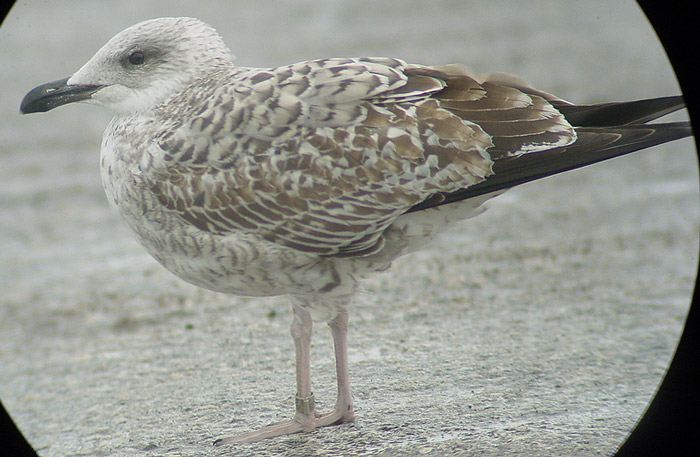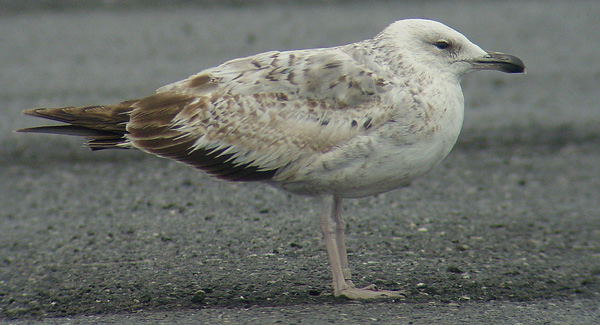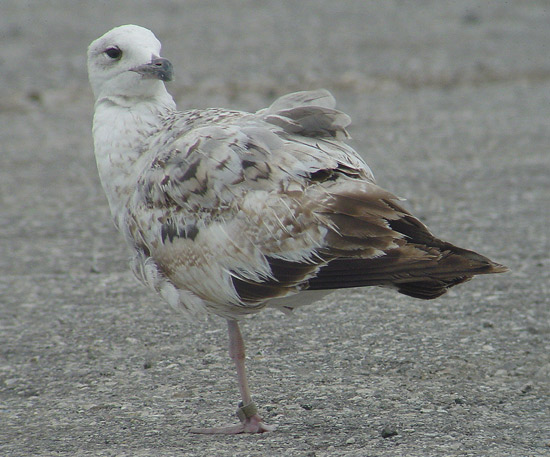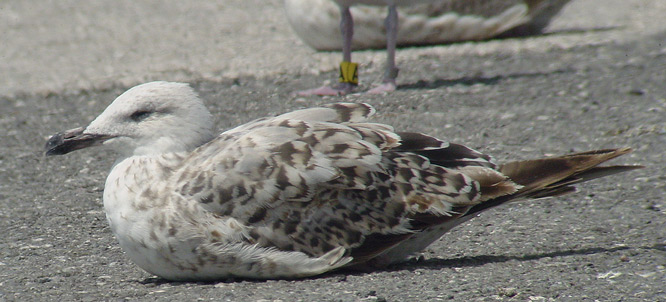 Yellow-legged
Gull- Geelpootmeeuw (L. michahellis): 1cy October
Yellow-legged
Gull- Geelpootmeeuw (L. michahellis): 1cy October
(last update: 08 december 2003)
YLG
1cy May
YLG
1cy June
YLG
1cy July
YLG 1cy August
YLG 1cy September
YLG 1cy October
YLG 1cy November
YLG 1cy December
YLG
2cy January
YLG 2cy February
YLG 2cy March
YLG 2cy April
YLG 2cy May
YLG 2cy June
YLG 2cy July
YLG 2cy August
YLG 2cy September
YLG 2cy October
YLG 2cy November
YLG 2cy December
YLG
3cy January
YLG 3cy February
YLG 3cy March
YLG 3cy April
YLG 3cy May
YLG 3cy June
YLG 3cy July
YLG 3cy August
YLG 3cy September
YLG 3cy October
YLG 3cy November
YLG 3cy December
YLG
sub-ad Jan.
YLG sub-ad Feb.
YLG sub-ad March
YLG sub-ad April
YLG sub-ad May
YLG sub-ad June
YLG sub-ad July
YLG sub-ad Aug.
YLG sub-ad Sept.
YLG sub-ad Oct.
YLG sub-ad Nov.
YLG sub-ad Dec.
YLG
adult January
YLG adult February
YLG adult March
YLG adult April
YLG adult May
YLG adult June
YLG adult July
YLG adult August
YLG adult September
YLG adult October
YLG adult November
YLG adult December
(4 images) Swiss Yellow-legged Gull (L. michahellis) 885629, October 01 2001, Le Portel, France.
An example of a 1cy michahellis very much
resembling graellsii. All the wing-coverts appear rather pale brown
bleached and
the fresh scapulars are not particularly warm toned, rather pale grey-brown
based. The moult stage in the
wing-coverts is delayed compared to the average moult timing of michahellis
by early October with all wing-coverts and tertials still juvenile.
Fortunately, some individuals are ringed, like this Swiss 1cy michahellis:
Sempach Helvetica 885629. It was ringed May 09 2001 at Fanel, Switzerland
(46.59N-07.03E) and now recovered at Le Portel (50.43N-01.37E). May 09 is
extremely early to ring pulli compared to e.g. the Netherlands, where pulli are
ringed from the last decade of June.
This Swiss bird may have been
present at Le Portel, already in August 2001. it was seen again and photographed
in June and July 2002 (see
below).

images below: (L. michahellis) 885629 2cy, June 13 & 14 2002, Le Portel, France.
The same individual, Sempach 885629. Compared to
other 2cy michahellis in June this bird is slightly delayed in wing-coverts
moult. The upper tertial is growing and the retained tertials are very abraded
and the fringes are worn away. The greater coverts #1-2 are missing the other are still juvenile.
The innermost 8 median are juvenile. The four new second generation coverts
which are just growing in the central wing are the medians #9-12. The tips are visible below the outer lesser coverts. The lower lesser coverts
#1-4 are still juvenile as well.
Most of the feathers are reduced to single shafts with the complete tops worn
away. Lower lesser coverts #5 and
outwards are missing. Interestingly, the lower lesser coverts replaced in the
post-juvenile moult is still present. About half of the lesser coverts are still juvenile except two old second generation feathers, replaced in the
post-juvenile moult. The other 50% is missing. In the lowest row of lower scapulars, one
very fresh and two fresh feathers have pale brown base-colour and a thin anchor
patterns, much second generation-like in appearance. About seven scapulars
have adult-like grey bases with black broad shaft-streaks. Another upper
scapular is missing, the moult is still in progress. In the rear
scapulars, some old second generation scapulars appear bleached with the centres
white and the barred pattern dark brown. The head is mostly white, the iris and
bill dark and the legs pale flesh-pink.
All rectrices are still juvenile. Primary moult stage: P5 is missing, P6 is
still juvenile.


image below: (L. michahellis) 885629 2cy, July 10 2002, Le Portel, France.
Again, Sempach 885629. The delay in moult, which was still very obvious in June, has been reduced although this individual is still in the lower score classes. The upper two tertial are fresh and the third is growing; #4-6 are still juvenile, very abraded and the fringes are worn away. The greater covert moult has started: large parts have been shed, the inner coverts #1-3 are fresh, #4 is retained, #5 is missing, #6 is retained, while the outer greater coverts are missing. The median coverts have been replaced with #6-8 still growing. The lower lesser coverts #1-5 were replaced and the outer lower lessers are growing and missing. Most of the feathers are reduced to single shafts with the complete tops worn away. Lower lesser covert #5, moulted in the post-juvenile moult is still present and coverts #6 and outwards are missing. In the lesser coverts, these post-juvenile coverts can be found as well. About half of the lesser coverts are missing and several lesser coverts have been replaced. In the lowest row of lower scapulars, one rear scapular is still very worn. Several feathers have a pale brown base-colour and a thin anchor pattern, much second generation-like in appearance. In the upper scapulars, later replaced feathers are adult-like grey. Three scapulars are missing; the moult is still in progress. The head is mostly white, the iris and bill dark and the legs pale flesh-pink. The central tail-feather is missing and all other rectrices are still juvenile. Primary moult stage: P7 is missing, P8 is still juvenile.
